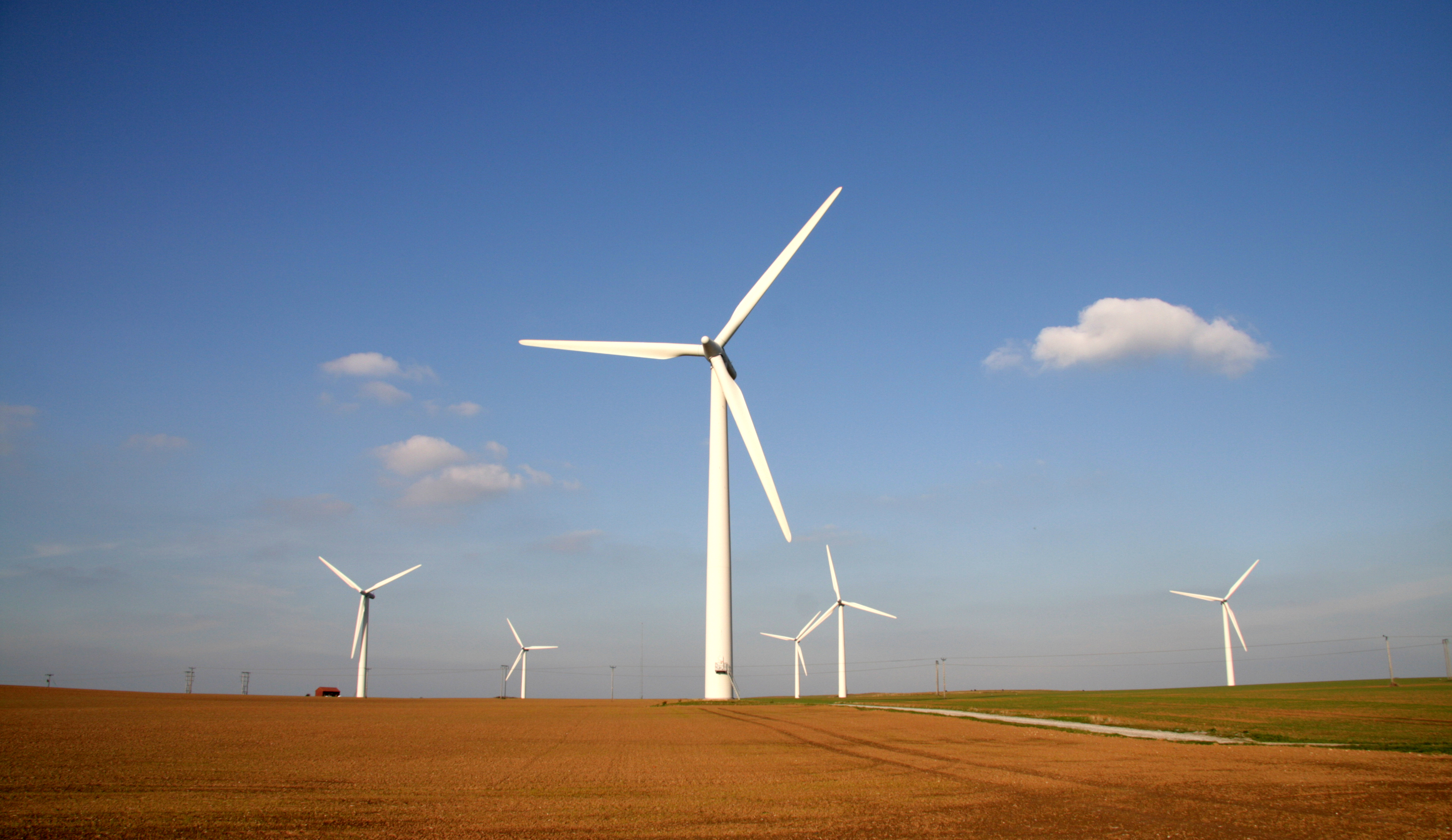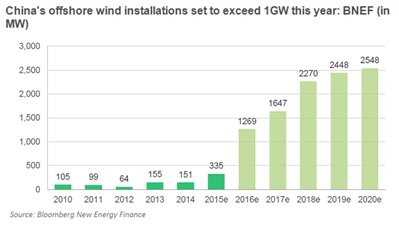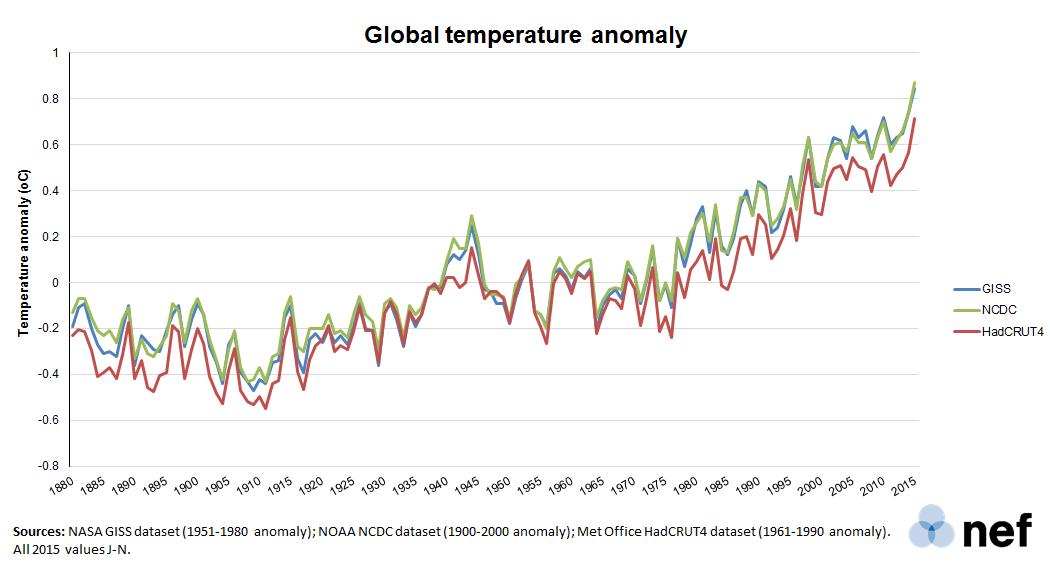Energy round-up: 6 predictions for 2016
What will the next 12 months hold for energy, at home and abroad?
08 January 2016
2015 proved to be an interesting year for energy and climate issues both globally and in the UK. Will 2016 hold more of the same?
Forecasting is a dangerous business, but here are six predictions you should keep an eye on.
1. The showdown on oil prices between Saudi Arabia and the US will intensify, and the Saudis will eventually break.
It looks like oil and gas prices are going to remain low for the foreseeable future, panicking both the oil industry in Saudi Arabia and the shale gas industry in the US.
The big question is whether Saudi Arabia can keep production high and prices low long enough to bankrupt enough of the American shale industry. The answer may come by the end of 2016 and several factors point to the Saudis breaking first.
For one, despite losses for the oil industry, low oil prices benefit many sectors in the US, especially as consumers now have more spending money in their pockets. However for Saudi Arabia, an oil-dependent economy, low prices are a clear loser.
There’s also the geopolitical dimension that will make worse Saudi Arabia’s financial problems. Saudi Arabia spends more on military spending as a percentage of GDP (11%) than any other country, is currently increasing this spending at a faster rate (21%) than any other country, and has a showdown with Iran on the horizon. To most observers, the public finances in Saudi Arabia are headed for disaster if nothing changes.
2. Renewables will set new records
Despite low fossil fuel prices (including coal), wind and solar will set new records in 2016 for installations and generation on every continent. This is a pretty safe bet. For many markets, including the important US market, the year-to-year change in 2016 may set records too.
Why is this? To some degree renewables and fossil fuels (especially oil) are not actually in competition. Oil is more important for transport whereas renewables are being integrated for electricity, so are in different markets. The costs of renewables are also rapidly declining, and there’s no reason to think the costs could ever go back up.
In politics, the American Presidential election promises to be interesting on this front, but don’t underestimate the significance of Paris. In the days following the agreement renewable energy stocks shot up and coal stocks continued to decline.

3. More investment in renewables will come from developing countries than developed countries
This transition may have happened for the first time in 2015, the data is still coming in, but it will almost certainly be the case in 2016. One striking example is China’s ambitions for offshore wind – the graph below shows the dramatic increase in projected installations given the government’s announced policies.

4. Hybrid sales will fall; electric vehicle sales will boom and become the hot energy news item of 2016
More so than renewables, low-carbon vehicles are an area where you might expect low oil prices to present a difficulty as they will encourage more people to stick with their regular car.
Sales of hybrid vehicles, which many people do compare to standard combustion vehicles in purchasing decisions, will likely fall. Conversely, electric vehicle purchases tend to be made by consumers who are less sensitive to price changes, evidenced by increased EV sales in 2015 despite low oil prices. In addition, a significant portion of EV sales are in industrial, commercial and public sectors where EV mandates play a strong role.
This prediction, like most others included here, differs significantly from OPEC’s delusional World Oil Outlook. On EVs it forecasts only a moderate increase in sales all the way out to 2040. OPEC dismisses EVs as a threat because it says it will take until 2040 for battery costs to fall by 30 – 50%, enough to make them viable options. It’s a particularly bold prediction as battery costs have fallen by about 50% in last five years alone.
Expect to see media interest in head-to-head races between the silent rockets and a lot of interest in three big 2016 releases: the Chevy Volt, the Nissan LEAF and the Tesla Model X.
5. Despite the recent stall in global emissions, expect increases in emissions to continue
There was plenty of reporting in 2015 on how for the first time greenhouse gas emissions stalled while the global economy grew (3%). As we wrote when the news was announced, this was likely a standout year – at least until we rapidly shift how our economy runs.
Importantly, it is the amount of total emissions in the atmosphere (the stock) rather than the increase or decrease in annual emissions (the flow) that is causing climate change, so any celebration is premature. Still, expect both the total emissions in the atmosphere and our annual emissions to increase in 2016.
6. 2016 will be the hottest year on record and sceptics will abandon the “global warming pause”
2015 was, by a large margin, the hottest year in modern records. But the UK Met Office forecasts 2016 to be even hotter. Climate change sceptics, who for the past few years have kicked up a lot fuss around a “global warming pause” by drawing a straight line from 1998 to 2012, will move on to a new talking point.
It may even be the case that sceptics begin to accept climate change, but downplay the likely environmental, social and economic damages – probably after flooding has left the front pages.

And one final prediction: we’ll continue to bring you energy analysis and climate news throughout 2016.
Topics Energy Environment






